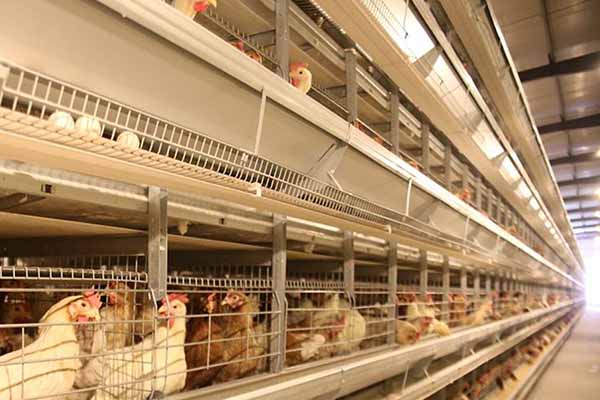Uganda Chicken Farm Automatic Ventilation System Installation Case Study
Time : 2025-06-24
The poultry industry in Uganda has been experiencing significant growth, with an increasing number of farmers opting for advanced technologies to enhance their production processes. One such technology is the automatic ventilation system, which plays a crucial role in maintaining optimal environmental conditions for chickens. This article provides a detailed case study of the installation of an automatic ventilation system in a chicken farm in Uganda, focusing on the technical aspects and the benefits realized.
Introduction
Chicken farming is a vital component of the agricultural sector in Uganda, contributing to food security and economic growth. As the industry grows, farmers are seeking innovative solutions to improve efficiency and productivity. One of the critical aspects of chicken farming is ensuring the right environmental conditions, which can significantly impact the health, growth, and overall performance of the birds.
Case Study: Automatic Ventilation System Installation
Farm Background
The farm in question is a medium-sized chicken farm located in the central region of Uganda. The farm has been in operation for over a decade and has a capacity of 10,000 chickens. The farm owner, aware of the importance of optimal environmental control, decided to invest in an automatic ventilation system to improve the farm’s efficiency.
System Selection
After thorough research and consultation with poultry experts, the farm owner selected an automatic ventilation system from a reputable manufacturer. The system was chosen for its ability to maintain the ideal temperature, humidity, and air quality, which are crucial for the health and well-being of the chickens.
Installation Process
The installation process was carried out by a team of experienced technicians who ensured that the system was installed correctly and efficiently. The following steps were involved:
1. Site Assessment: A comprehensive assessment of the farm was conducted to determine the best location for the ventilation system and to identify any potential obstructions.
2. Equipment Delivery: The ventilation system components, including fans, dampers, sensors, and control panels, were delivered to the farm.
3. Installation of Fans and Dampers: The fans and dampers were installed strategically around the farm to ensure even distribution of air.
4. Sensor Placement: Sensors were placed in key areas to monitor temperature, humidity, and ammonia levels.
5. Control Panel Installation: The control panel was installed in a central location, allowing for easy monitoring and control of the system.
6. Testing and Calibration: The system was thoroughly tested to ensure it functioned correctly, and any necessary calibrations were made.
System Operation
Once the installation was complete, the system was put into operation. The automatic ventilation system works by:
1. Monitoring Environmental Conditions: Sensors continuously monitor the temperature, humidity, and ammonia levels in the farm.
2. Adjusting Ventilation: Based on the readings, the system automatically adjusts the fan speed and damper positions to maintain the desired environmental conditions.
3. Alerts and Maintenance: The system provides alerts for any issues that may arise, allowing for timely maintenance and troubleshooting.
Benefits Realized
The installation of the automatic ventilation system has brought several benefits to the farm:
1. Improved Health and Performance: The chickens are now exposed to optimal environmental conditions, leading to improved health and growth rates.
2. Reduced Energy Costs: The system’s ability to maintain the ideal conditions reduces the need for additional heating or cooling, resulting in lower energy costs.
3. Increased Productivity: With healthier chickens, the farm has seen an increase in egg production and better quality meat.
4. Eco-Friendly: The system helps reduce ammonia emissions, contributing to a cleaner and more sustainable farming environment.
Conclusion
The installation of an automatic ventilation system in the chicken farm in Uganda has been a successful venture, demonstrating the positive impact of advanced technology on poultry farming. By maintaining optimal environmental conditions, the farm has seen improvements in health, productivity, and sustainability. This case study serves as an example for other farmers looking to enhance their operations through the use of modern poultry equipment.
Tags












